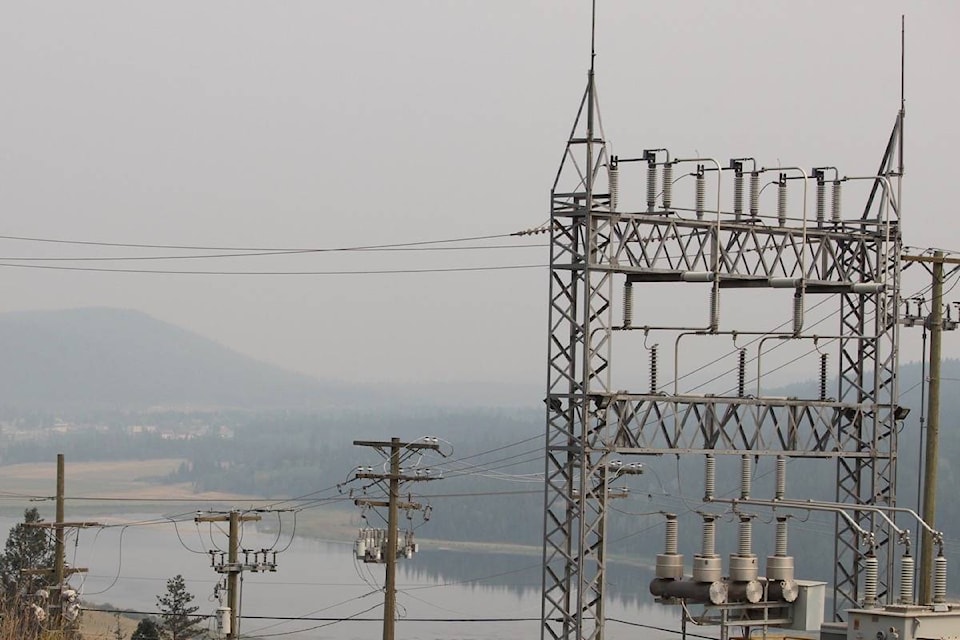9 p.m. update: The Thompson-Nicola Regional District (TNRD) says they have not yet been able to assess damage around the Pressy Lake area.
“We are hoping to be able to get into Pressy Lake in the next few days as long as we can get our staff in there safely,” says Debbie Sell, Information Officer with the TNRD’s Emergency Operations Centre.
“As soon as we are able to get confirmed information, our first step would be to contact property owners if there is structural damage and then release the information publicly. We will make the information public as quickly as we can. The loss of someone’s property is much too important,” says Sell.
Crews from BC Hydro and the BC Wildfire Service are working to de-energize hydro lines and remove trees over the road so the TNRD can access areas where the Elephant Hill fire grew over the weekend.
During the day today, evacuation orders were lifted along the Highway 97 corridor, including Clinton. Highway 97 is now open to traffic.
“We looked and we assessed and we scanned the area and we felt there was a strong enough perimeter, enough black area,” says Noelle Kekula, Fire Information Officer for the Elephant Hill fire.
“We try to have a good distance in off the edge of the perimeter so if it goes for a run it won’t get past the perimeter. With all the hard work from the crews we feel like that’s going to hold and so we recommended that that portion gets downgraded.”
Overall today, Kekula says crews made good progress on the fire.
“There was limited spread throughout the fire, we’ve seen very little growth. It’s creeping in a few spots but very limited growth,” she says.
“We just continue to work on that north flank where the head of the fire is, so that’s where crews were. We had a lot of crews up in that area and down on the north of [Highway] 99, Division Bravo.”
Crews are also making good progress on the east branch of the fire as well, she says.
The evacuation order downgrade did not include the Loon Lake area, however.
“Unfortunately, for the Loon Lake residents it’s just not safe enough for them and there’s more work that needs to occur in that Loon Lake area, and other areas. We are still trying to get those areas, but we’ll take the small wins where we can.”
Kekula asks that residents stay away from areas still under order, particularly in the Pressy Lake area.
“No one should be trying to access that area because again our crews are working on the head of the fire and it’s still really hot in there. It’s an active fire and I know everyone’s curious and they want to go look and they want to see what it’s all about but you need to stay out of there.”
While night crews will be taking a small break today, tomorrow the plan is to continue to action the head of the fire and to make safe the many lakes that have been overtaken by the fire’s growth over the weekend.
Kekula says they continue to work to keep the fire out of the Deadman Valley as well as to keep the Division Bravo area under control.
She says that while she knows people are frustrated, she asks that they stay patient.
“Trust we are working all the divisions and life and property are priorities and getting people back in their homes and back in the area.”
Original story: There was no real growth on the Elephant Hill fire last night, says Fire Information Officer Noelle Kekula.
“There was some activity on the fire, some low minimal activity,” she says. “But there wasn’t a real significant growth on any of it.”
This is welcome news after a weekend where the fire jumped in size and grew northwards due to gusty winds in the area.
Related: Elephant Hill fire now estimated at 168,092 hectares
Today crews will be working on increasing control lines, says Kekula.
“We are doing some mop up on some of the flanks so that’s good news and just taking advantage, continuing to take advantage of the cooler conditions and wet conditions we had.”
There are 613 firefighters, 23 helicopters and 135 pieces of heavy equipment working on the fire.
Among those working on the fire are crews and personnel from New Zealand, Australia, the United States, Ontario, Saskatchewan, Alberta and Quebec, says Kekula.
“A significant amount are crews, but we also have some of the experts that are helping us with other [things] behind the scenes, like the weather, big picture planning and ignitions and things like that,” she says.
The personnel share expertise among themselves.
“We’re hearing different stories on how they manage incidents and fires and just brainstorming and coming up with ideas and what’s worked before and what hasn’t and the different timber types. It’s a really good opportunity to learn from other experiences,” she says.
“Right now I’m here at the RCMP office and I’m just watching the co-ordination between RCMP, military and the conservation office. It really has been a concerted effort between all agencies to work on this incident.”
Kekula says it takes a lot of communication to keep things running smoothly.
“Phone calls, texts, emails, meetings, the whole gambit we are using to communicate and that also includes the regional district as well and everyone — members of the public and media — everyone.”
